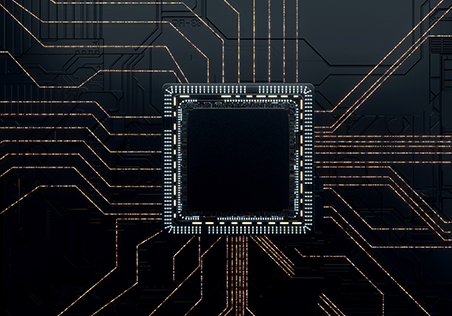
General rules for PCB design and wiring

When designing PCB, pay attention to the following points:
(1) From the perspective of reducing radiation disturbance, multi-layer boards shall be selected as far as possible, and the inner layer shall be used as power supply layer and ground wire layer respectively, so as to reduce the impedance of power supply line, suppress the public impedance noise, form a uniform ground plane for signal line, increase the distributed capacitance between signal line and ground plane, and restrain its ability to radiate into space.
(2) The power line, ground wire and PCB wiring shall maintain low impedance to high-frequency signals. When the frequency is very high, the power line, ground line or PCB wiring will become a small antenna for receiving and transmitting disturbance. In addition to adding filter capacitor, the method to reduce this disturbance is to reduce the high-frequency impedance of power line, ground wire and other PCB routing itself. Therefore, the routing of various PCBs should be short and thick, and the lines should be uniform.
(3) The power line, ground wire and printed wire shall be properly arranged on the PCB, and shall be short and straight as far as possible, so as to reduce the loop area formed between the signal line and the return line.
(4) The clock generator shall be as close as possible to the device using the clock.
(5) The shell of quartz crystal oscillator shall be grounded.
(6) Circle the clock area with ground wire, and the clock line shall be as short as possible.
(7) PCB shall use 45 ° broken line instead of 90 ° broken line wiring as far as possible to reduce the external transmission and coupling of high-frequency signals.
(8) Single point power supply and single point grounding for single panel and double-sided panel; The power line and ground wire shall be as thick as possible.
(9) The I / O drive circuit shall be as close as possible to the connector on the side of the PCB to leave the PCB as soon as possible.
(10) The key lines shall be as thick as possible, and protective areas shall be added on both sides. High speed lines should be short and straight.
(11) The component pin shall be as short as possible, and the decoupling capacitor pin shall be as short as possible. It is best to use the patch capacitor without lead.
(12) For a / D devices, the ground wires of digital part and analog part should be unified rather than crossed.
(13) Clock, bus and chip selection signals shall be far away from I / O lines and connectors.
(14) Analog voltage input line and reference voltage terminal shall be far away from digital circuit signal line as far as possible, especially clock.
15) The clock line perpendicular to the I / O line has less interference than the parallel I / O line, and the clock element pin should be far away from the I / O cable.
(16) Do not route wires under quartz crystals and noise sensitive devices.
(17) Do not form current loop around weak signal circuit and low-frequency circuit.
(18) Do not form a loop for any signal. If it is inevitable, keep the loop area as small as possible.
Commax-Tech Electronic Co., Ltd Electronic component specialist
B23, second floor, ASEAN building, Longhua District, Shenzhen
sales@commax-tech.com
https://commax-tech.com
Keyword:PCB Design General Wiring Rules I/O Drive Circuit A/D Device Clock Bus Chip Select Signal Analog Voltage Input Line Reference Voltage Terminal Clock Element Quartz Crystal Current Loop Commax-Tech Electronic
Relevant information
-
What does the new specification approved by risc-v mean?
-
Use cases of 8-bit MCU and 32-bit MCU
-
Analysis of vehicle MCU
-
Discussion on RF PCB design
-
Summary of WiFi module suitable for novice learning
-
Detailed explanation of WiFi module applicable to set-top box
-
Selection Guide for on-board special crystal oscillator
-
GPS navigation is not accurate, quartz crystal oscillator has the final say!
-
Understand the importance of chip crystal oscillator by disassembling outdoor sports smart watches
-
Relationship between differential crystal oscillator and quartz crystal oscillator
-
How to control the temperature has become the number one problem in the use of quartz crystal oscillator
-
How to judge the pin order of IC chip
-
What is an IC chip
-
Difference between triode BJT and FET
-
FET -- understanding the function of capacitance in circuit from its name


